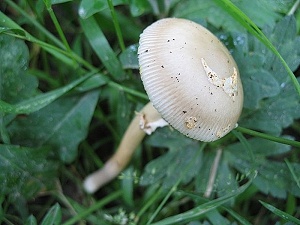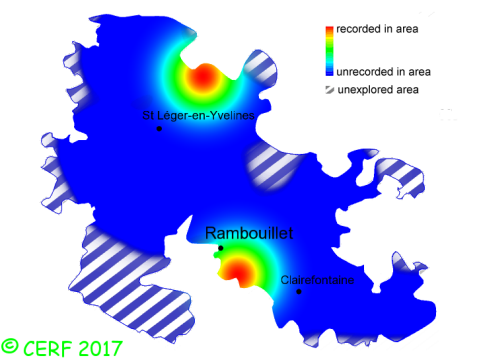| Amanita battarae (Boud.) Bon |
|
|
|
|
|
|
The cap is greenish-yellow to greyish-brown, with a central umbo; its margin is striate. The cap surface is smooth, not viscid nor sticky. The stem is smooth or finely scaly, with a white sheathing volva, without ring. The flesh is unchanging; its texture is fibrous. The gills are free, crowded . The spore print is white. This species is mycorrhizal. It grows on the ground, in broad-leaved woods (low grounds) or coniferous woods (high ground), on a rather acid soil, with pine, spruce or various deciduous trees. The fruiting period takes place from July to November.
Distinctive features : olive-brown umbonate cap, with a darker band before the clearly paler striate margin; ochre sheathing volva at stem base Amanita battarae is rare and confined in the forest of Rambouillet, and is infrequent, more generally speaking . | ||
|
page updated on 14/01/18

